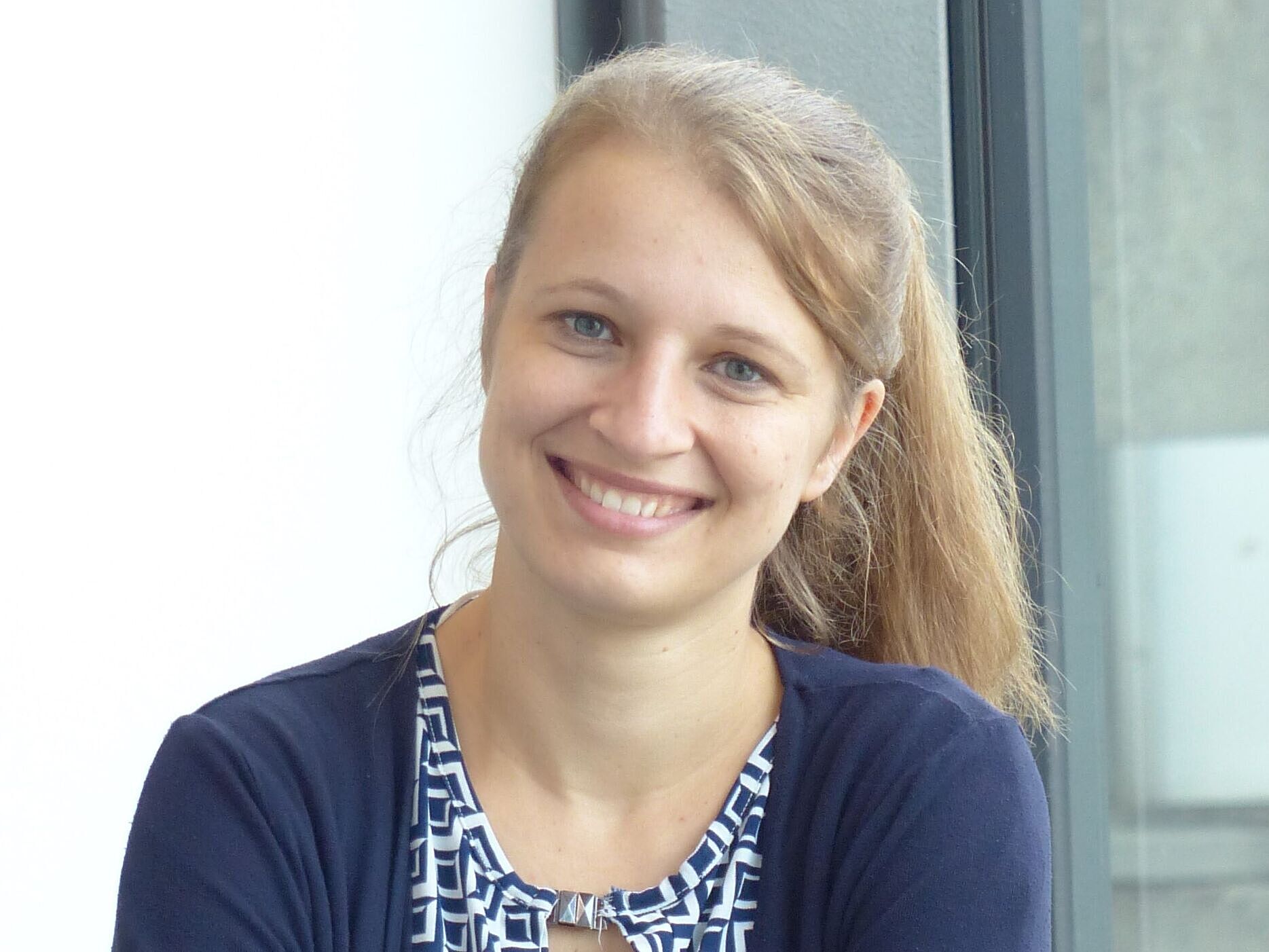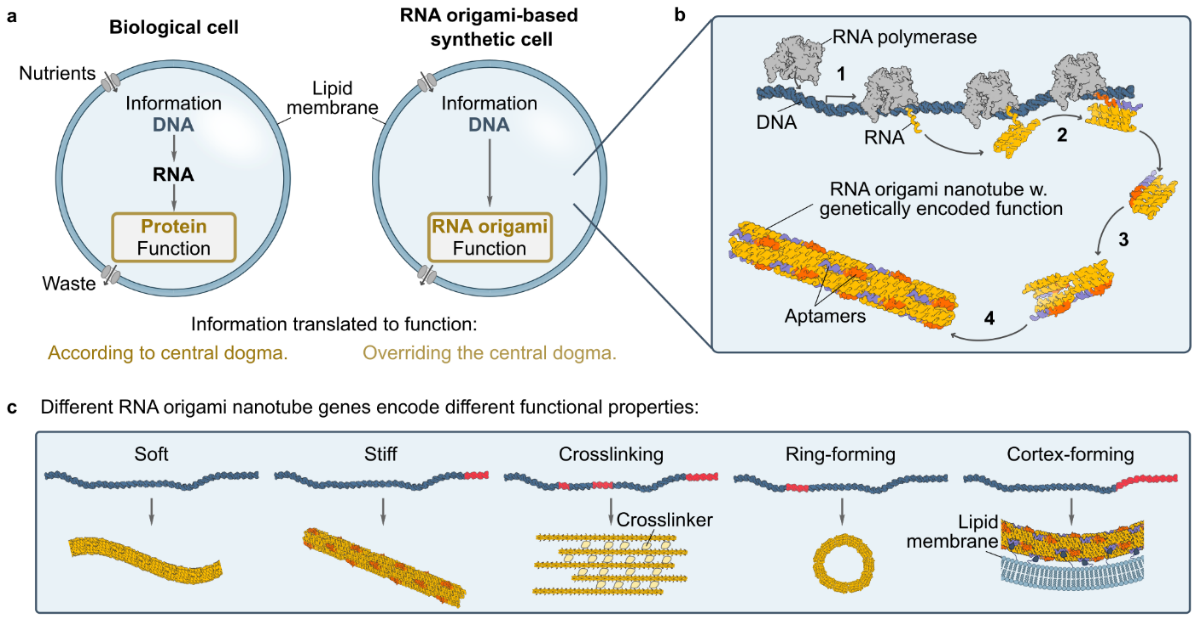RNA design is still in its infancy compared to protein folding and DNA nanotechnology. Nonetheless, fundamental questions on the origins of life in an RNA world as well as the rise of RNA therapeutics make RNA design a highly exciting upcoming field. The vision of our group is to create a lipid vesicle as a simple model of a cell, capable of self-replication and evolution [1], that operates based on custom-engineered molecular hardware made from highly functional and folded RNA. We have recently developed a software tool, PyFuRNAce, to streamline the design of functional RNA nanostructures [2]. By integrating specific membrane aptamers, RNA sequences which target lipid membranes, into cytoskeleton-like RNA nanostructures [3], we control membrane mechanics and pore formation in giant unilamellar lipid vesicles. We further show that mutagenesis can lead to emergent phenotypes and functions even in relatively simple systems [4]. Since all our RNA nanostructures are produced by transcription from a synthetic gene, they can, in principle, transfected and expressed in cells. Due to their compatibility with directed evolution pipelines, and the possibility to integrate target aptamers and ribozymes, we envision that they contribute to the development of evolvable synthetic cells.
[1] Kriebisch, Christine ME, et al. Chem 11 (3), 102399 (2024).
[2] Monari, L., Braun, I., Poppleton, E., & Göpfrich, K. bioRxiv (2025)
[3] Tran, M.P., Chakraborty, T., Poppleton, E., Monari, L., Illig, M., Gießler, F. & Göpfrich, K. Nat. Nanotechnol. (2025), https://doi.org/10.1038/s41565-025-01879-3
[4] Verstraeten, W., Tran, M. P., Taskina, A., Hamberger, M., Green, E. W., Platten, M., ... & Göpfrich, K. ChemRxiv (2025).
Kerstin Göpfrich was appointed Professor at the Center for Molecular Biology of Heidelberg University in 2022. She studied Physics and Molecular Medicine at the University of Erlangen before continuing her academic training at the Cavendish Laboratory, University of Cambridge (UK). She completed her PhD in 2017 with a dissertation on DNA-origami nanopores. Since 2019, she has also led a research group at the Max Planck Institute for Medical Research in Heidelberg. Her scientific achievements have been recognized with numerous grants and awards, most recently the Alfried Krupp Prize in 2024.
Moderation: Professor Dr. Thomas Klinger


